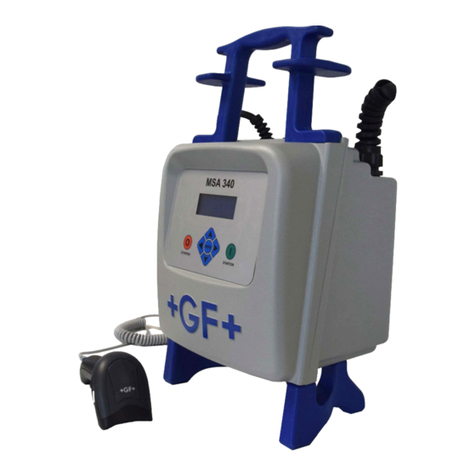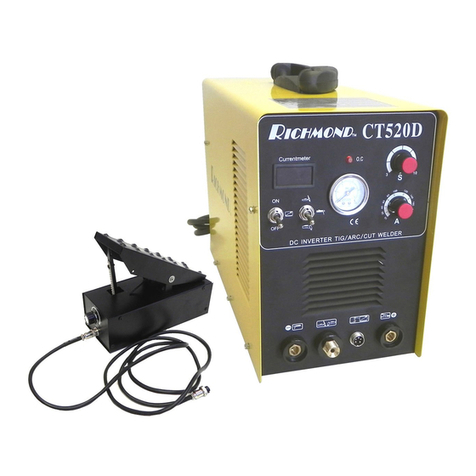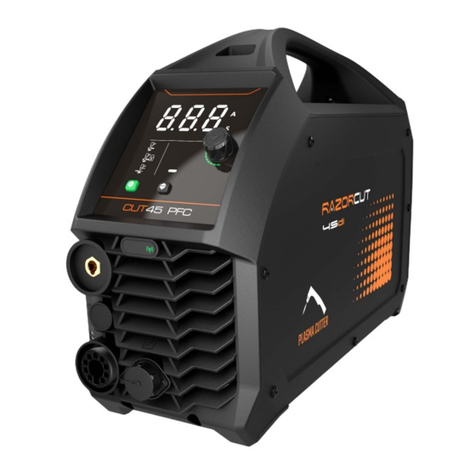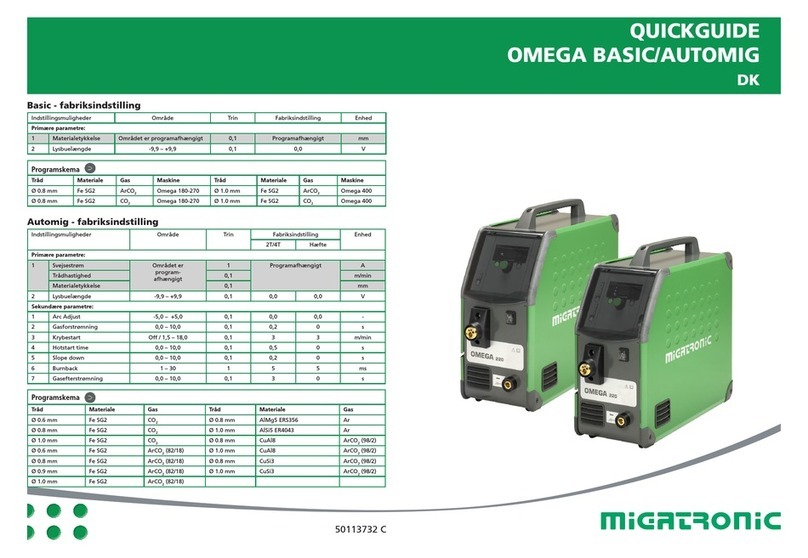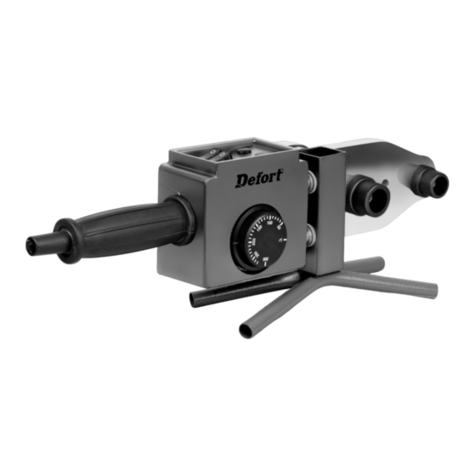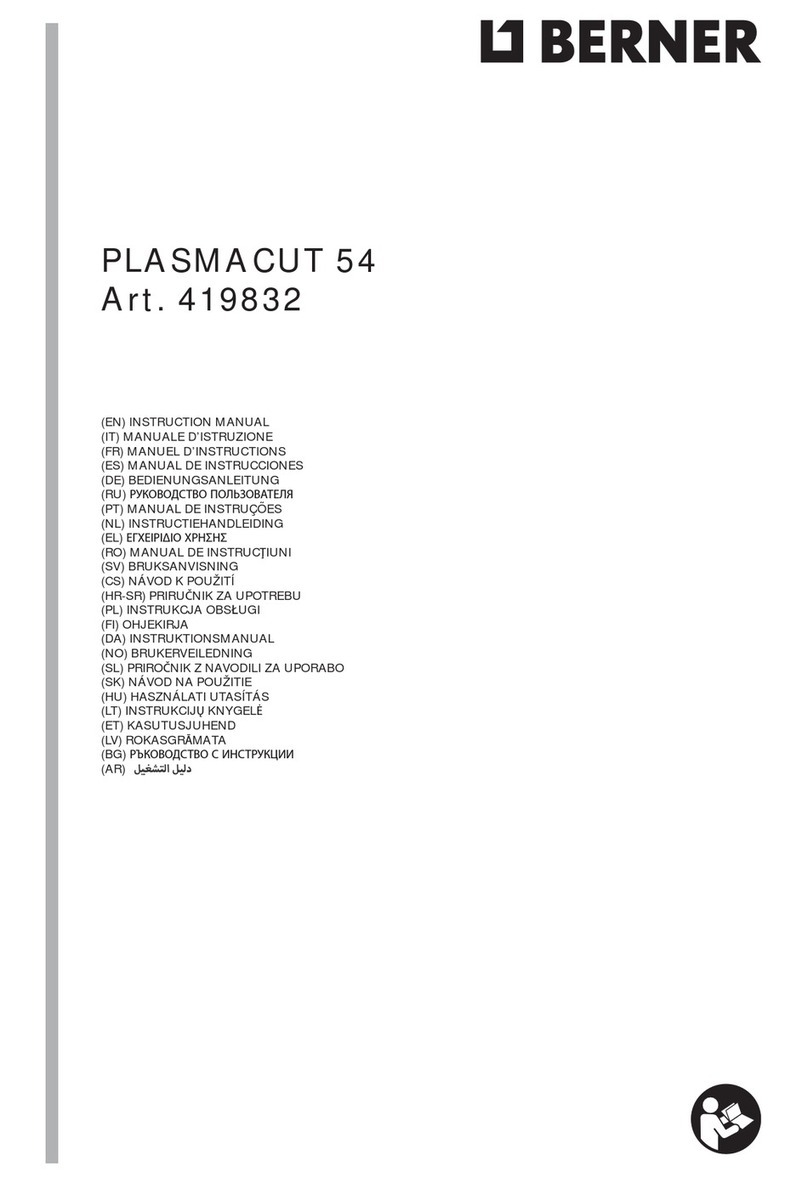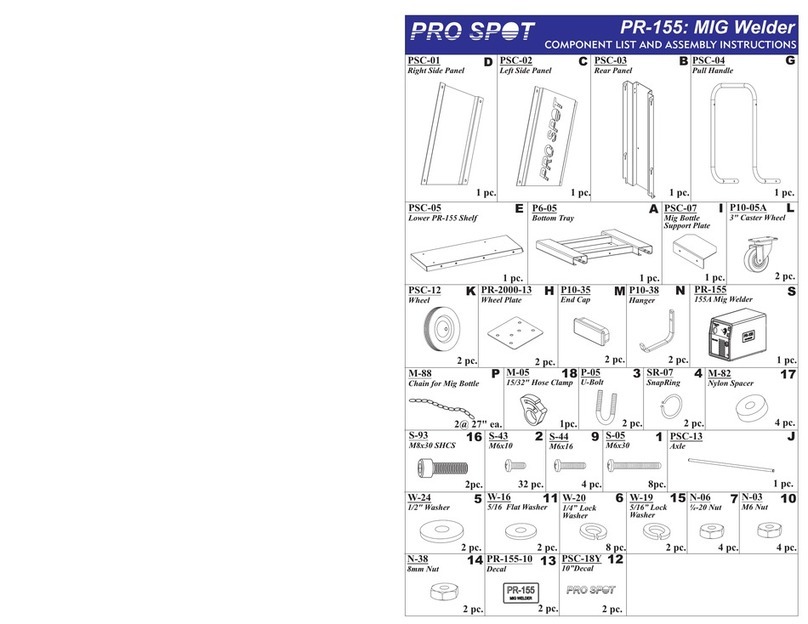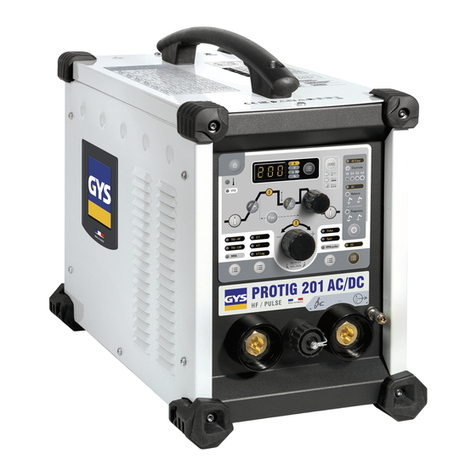To Begin
Turn the Power Switch to the ON position.
Position yourself to where you can rea the air pressure. Press the torch switch (air will exhaust from torch,
a just the air regulator to rea approximately 0.4 to 0.6 MPa an release torch switch.
Secure groun clamp to workpiece. Connect clamp to main part of workpiece, not the part being remove .
Cutting
Position torch tip slightly above workpiece, press torch switch an lower torch tip towar workpiece about 3-
5mm istance, an cutting arc will strike. As there’s a steel ring to keep the istance from tip to workpiece, so
you can just touch the steel ring to workpiece. You’ better cut from the fringe of wokpiece, if you want to cut
in the mi le of workpiece, you’ better keep a slightly angle to ensure blow the melte metal. After cutting arc
is establishe , move the torch in the esire irection.
This metho ology is calle Drag-Cutting. Avoi moving too fast as woul be in icate by sparks ra iating
from the top si e of workpiece. Move the torch just fast enough to maintain sparks concentration at the
un ersi e of the work-piece an making sure the material is completely cut through before moving on. A just
rag spee as esire /require .
Stand-off Cutting
In some cases, it may be beneficial to cut with the torch tip raise above the work-piece approximately 1/16" to
1/8” to re uce material blow-back into the tip an to maximize penetration of thick material cuts. An example
of "stan -off cutting" woul be use when penetration cutting or gouging operation is being performe . You
can also use “stan -off” technique when cutting sheet metal to re uce the chance of splatter-back tip amage.
Piercing
For piercing, position the tip approximately 3.2 mm above the workpiece. Angle the torch slightly to irect
sparks away from the torch tip an operator.
Initiate the pilot arc an lower the tip of the torch until the main cutting arc transfers, sparks start.
Start the pierce off the cutting line on the scrap piece or template an then continue the cut onto the cutting line.
Hol the torch perpen icular to the workpiece after the pierce is complete an continue cutting as esire .
Clean spatter an scale from the shiel cup an the tip as soon as possible.
Quality Cuts
Dross (slag) is the excess material that spatters an buil s up on the un ersi e of the work-piece as you cut.
Dross occurs when the operating proce ure an technique is less than optimal. It will require practice an
experience to obtain cuts without ross. Although less than optimal cuts will contain ross, it is relatively easy
to remove by breaking it off using pliers or chipping off with a chisel or scraping or grin ing the finishe cut as
9
PERATI N

